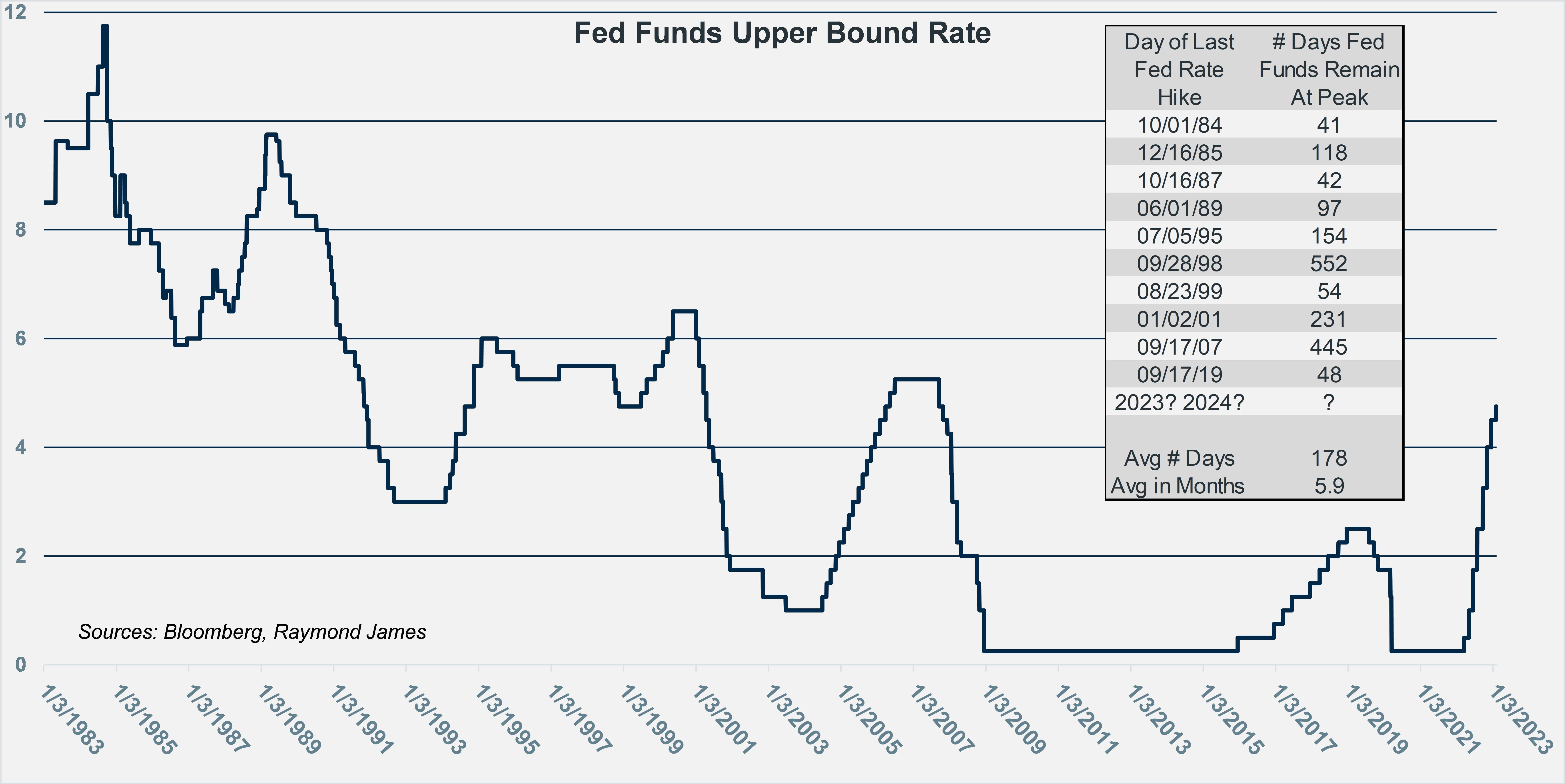by Doug Drabik, Fixed Income, Raymond James
Doug Drabik discusses fixed income market conditions and offers insight for bond investors.
Taking Advantage of Fixed Income’s Current Dual Benefit
There is often a bunch of chatter over what the Fed is going to do. Why? I don’t understand because the one thing that has been pretty consistent is the Fed’s transparency. I guess it makes for controversial headlines which are just another audience grab rather than reporting of actual news. Whether you agree or disagree with the Fed’s policies and moves is a whole different discussion. Fed Chair Jerome Powell has been clear about his intent on hiking short term rates, consequently slowing employment and consumer spending and thus curbing inflation. Although inflation is dropping (it has fallen 6 consecutive months from 9.1% to 6.5%), it is still well above the target 2.0%-2.5% desired level. The tight labor market has shown no signs of slowing which supports the Fed’s plan to stay on course with more rate hikes.
We have not even peaked on the rate hikes yet the market is contemplating the Fed’s reversal. It is not likely
to happen anytime soon, as historically, once at the peak rate (which we are not there yet), the Fed reverses policy (starts to cut rates) anywhere from 41 days to 1.5 years later or on average just under 6 months.
Here is what fixed income investors need to contemplate. If the Fed forces a recession like most pundits suggest (if we’re not already in one), the average length of the last seven recessions is just under one year. During all seven recessions, the 1-year Treasury rate declined and in five of seven cases the 10-year Treasury rate declined. One year after the recession, the 1 year and 10 year Treasuries rates were lower in six and four of the occurrences respectively. The takeaway is that as we near the peak of the Fed hike cycle, the markets could be approaching an extended period of lower interest rates. Although the primary purpose of fixed income is often to protect principal, when it also provides high levels of income, it is that much more productive in your portfolios. We believe there is a limited window of opportunity to take advantage of the current high yielding interest rate environment and that moving into intermediate to longer maturities will protect these income levels and reduce reinvestment risk. Take advantage of the dual benefit (principal protection AND high income levels) while the opportunity exists.
The author of this material is a Trader in the Fixed Income Department of Raymond James & Associates (RJA), and is not an Analyst. Any opinions expressed may differ from opinions expressed by other departments of RJA, including our Equity Research Department, and are subject to change without notice. The data and information contained herein was obtained from sources considered to be reliable, but RJA does not guarantee its accuracy and/or completeness. Neither the information nor any opinions expressed constitute a solicitation for the purchase or sale of any security referred to herein. This material may include analysis of sectors, securities and/or derivatives that RJA may have positions, long or short, held proprietarily. RJA or its affiliates may execute transactions which may not be consistent with the report’s conclusions. RJA may also have performed investment banking services for the issuers of such securities. Investors should discuss the risks inherent in bonds with their Raymond James Financial Advisor. Risks include, but are not limited to, changes in interest rates, liquidity, credit quality, volatility, and duration. Past performance is no assurance of future results.
Investment products are: not deposits, not FDIC/NCUA insured, not insured by any government agency, not bank guaranteed, subject to risk and may lose value.
To learn more about the risks and rewards of investing in fixed income, access the Financial Industry Regulatory Authority’s website at finra.org/investors/learn-to-invest/types-investments/bonds and the Municipal Securities Rulemaking Board’s (MSRB) Electronic Municipal Market Access System (EMMA) at emma.msrb.org.
















